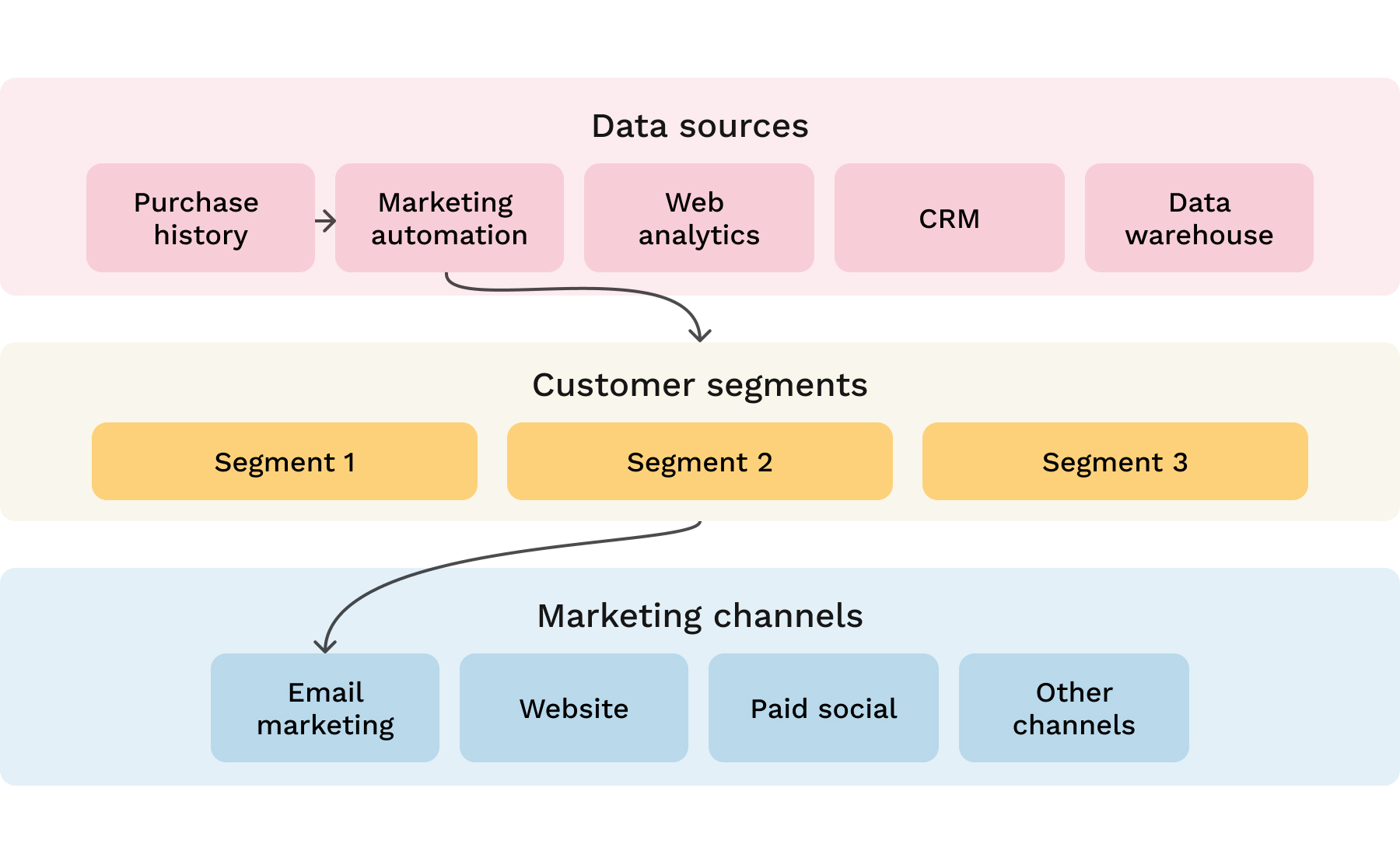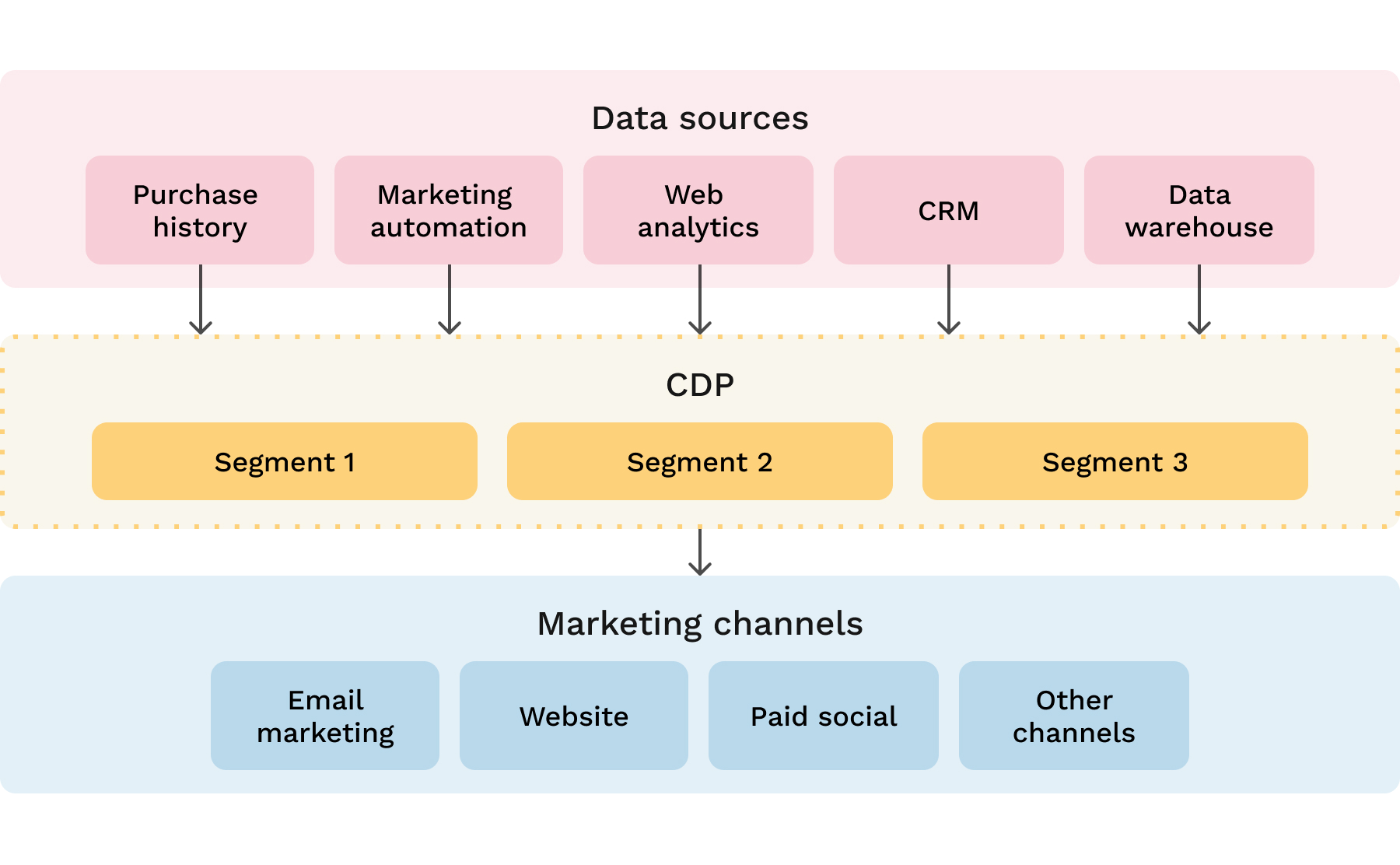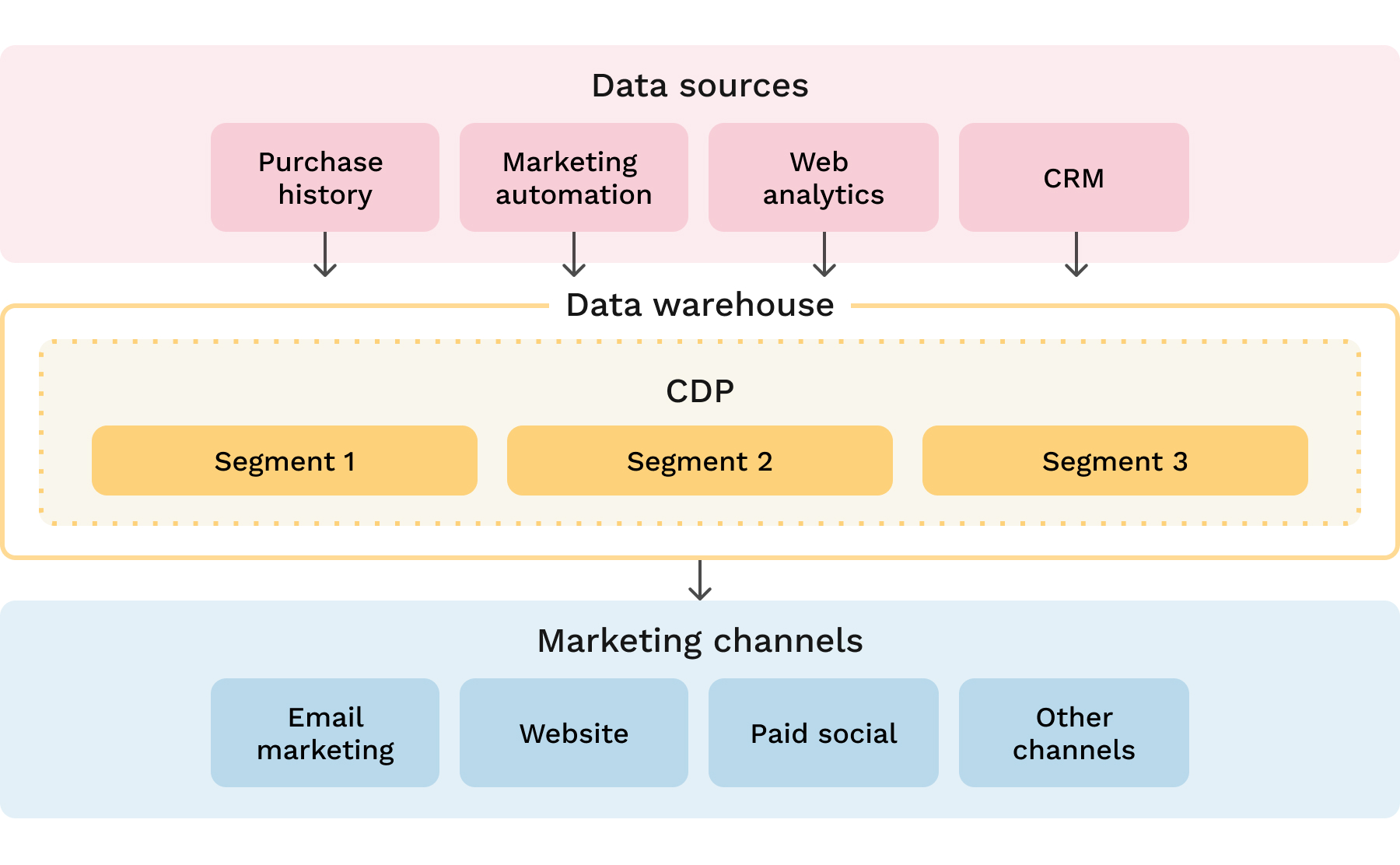The Data Handbook
How to use data to improve your customer journey and get better business outcomes in digital sales. Interviews, use cases, and deep-dives.
Get the bookUtilising customer data is increasingly on every marketer’s table. Yet, the reality of it can get messy. Marketers have to operate between data teams and systems and master SQL all while juggling Excel sheets.
Drivers for investing in customer data capabilities
The complexity of customer data and tools, consumers’ expectations and privacy concerns are the main drivers for companies to get their data operations into better shape in 2024. A well-oiled customer data operation gives you a complete picture of your customers and enables you to deliver that omnichannel experience they crave.
Complexity of tools and processes
Most companies would love to do much more with customer data, but the available tools and difficulty of processes hinder them. Data volume and complexity are exploding, making it impossible to manage effectively without purpose-built tools.
Customer expectations
At the same, customers expect a seamless experience across all channels, from browsing a website to interacting with customer service. Similarly, the shift towards building highly personalised experiences with tools that business users can operate drives investments in customer data. Identifying high-value segments, personalising campaigns, and ultimately driving higher ROI sounds appealing to any company.
Privacy concerns
Navigating the world of privacy regulations is also a must. No single tool solves all privacy-related problems but aligning around data at least helps to identify the key issues and get started with solving them.
3 approaches to data-driven customer operations
As usual, there is no one-size-fits-all approach. Depending on the maturity and ambition, options range from basic integrations to full-blown platform solutions. We explore three: point-to-point integrations, packaged CDPs, and composable CDPs.
1. Point-to-point integrations
This might be the easiest approach for companies who have a clear use case in mind. Simply connect individual customer data sources, like web analytics and marketing automation, with custom integrations to be able to activate customer data with enriched segmentation. This offers companies flexibility and control, but probably requires custom coding and stacks up maintenance debt.
For example, with point-to-point integrations, you can personalise your messaging in your marketing automation tool based on customers’ purchase history or website visit activity.
Activating segments with point-to-point integrations:

2. Packaged CDPs
For companies that want to see widespread benefits quickly but haven't yet invested heavily in customer experience architecture, a packaged CDP can fill the gap. It saves you the hassle of complex in-house development, getting you up and running with essential functionalities faster.
Packaged CDPs are all-in-one solutions offering data ingestion, unification, and activation functionalities. They are user-friendly, offer ready-made integration connectors, and reduce IT burden.
On the other hand, they can be less customisable and lock you into a vendor's ecosystem. Packaged CDPs also often require data duplication, and they don’t take advantage of existing data capabilities such as data cleansing, storage, identity resolution or any AIs or machine learning capabilities.
Activating segments with a packaged CDP:

3. Composable CDPs
As seen elsewhere in business-oriented tech, customer data also has an emerging composable paradigm. Composable CDPs are the antithesis of bundled solutions. Instead of a single platform, they offer a modular approach. You select best-in-breed components for specific tasks.
This approach allows for maximum flexibility and customisation but requires maturity as well as significant investments to set up, integrate, and manage the individual components. It's ideal for companies with strong existing data capabilities and complex data needs. With a composable CDP, a more mature company can for example take advantage of their existing data science capabilities to utilise their own business-specific algorithms.
Activating segments with a composable CDP:

Why invest in customer data
Investing in any of these approaches transcends simply managing data. It's about gaining a competitive edge by truly understanding your customers, translating to measurable business impact.
With the right approach, you’ll be able to personalise at scale, deliver exceptional omnichannel experiences, and identify high-value customers – all leading to increased customer loyalty, revenue growth, and a future-proofed data strategy that adapts as your business evolves.
The Data Handbook
How to use data to improve your customer journey and get better business outcomes in digital sales. Interviews, use cases, and deep-dives.
Get the book



